The Nicaraguan Scientist Who Mapped the Human Heart
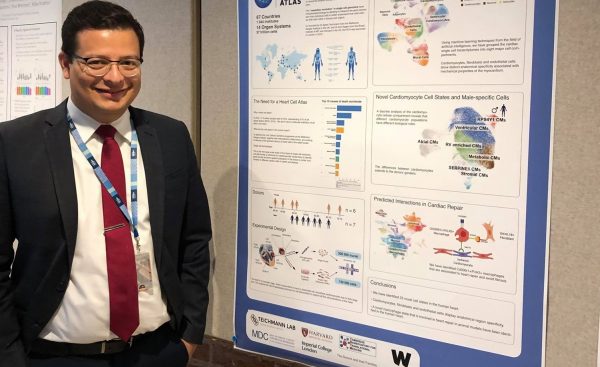
Dr. Carlos Talavera-Lopez has a PhD in Computational Biology and medicine. He recently formed part of the team that has classified the cellular composition of the human heart.
By Cindy Regidor (Confidencial)
HAVANA TIMES – He was curious, questioned everything, and had a voracious appetite for science. The determination his mother instilled in him and a series of fortunate events then built on these qualities. All of this has led Carlos Talavera Lopez into the world’s most prominent research circles.
This young Nicaraguan will soon see the results of his most recent study published in a highly prestigious science magazine.
The work they’re publishing involves characterizing the cellular composition of the adult human heart, something never before undertaken. The research involved four research centers. The Wellcomm Sanger Institute / EMBL-EBI in Cambridge, England, is where Talavera currently works. Also participating were teams from the Imperial College in London, Max Delbruck Centre in Berlin, Germany, and Harvard Medical School in the United States.
“We analyzed half a million cells from six anatomical regions of 14 human hearts. My participation in the study drew on my experience in immunology and artificial intelligence. I directed and implemented the analysis with methods of artificial intelligence to understand how the immune cells of the heart maintain its functioning.” This is the way Dr. Talavera explains in simple terms a highly complex task. He spoke to us via a video call from Cambridge, in the UK, where he currently resides.
A history of overcoming barriers
“You’ll never leave here,” was the phrase that, as a child, challenged him to prove them wrong. Talavera is a native of the Yaguare neighborhood in Matagalpa. When he time-travels back to his childhood, memories of contrast appear. He recalls his house on a hill, surrounded by mountains. The house was small and simple, constructed of wooden boards, but had a magnificent view of the entire city. What comes to his mind most clearly is the landscape of the rainy season. The clouds would gather and a lightning storm would grant them a spectacle that left him enthralled.
The family situation he comes from is common in Nicaragua. The family was large with an absentee father due to alcoholism. His mother “La Tonita” as she’s known was the one to keep them going. She took in clothes to wash and iron, she worked as a receptionist and she crocheted small table coverings. In that way, she supported her six children – five girls and a boy. When she went out to work, the older girls assumed the care of the younger children, including Carlos. He was the next-to-last of her children.
Carlos speaks of his mother and sisters with great affection and gratitude. “If you go to Matagalpa, I don’t think anyone could tell you who Carlos Talavera is. But if you ask for La Tonita, that’s a person that everyone knows and loves,” he says smiling.

At the beginning of the nineties, even before he was old enough for school, his sisters taught him to read. “They gave me books to entertain myself with to keep me quiet,” he recalls. Most of the books were on Chemistry and Physics, many of them from the Soviet Union, translated into Spanish. These had been left thanks to the close relation of the Sandinista government with the USSR in the 80s.
When the books no longer amused him, Carlos would go out to the yard where there were abundant plants. There were also metal hunks, old household appliances and the tools his father used, a mechanic by trade. “I’d play with all that. I once had the idea of making a rocket, including the fuel. I don’t know how I managed to get a half gallon of diesel, but I did. Thinking I was going to launch it, I nearly burned down half the house,” he remembers laughing.
His studies were always supported through scholarships. He began primary school at La Inmaculada, a private Catholic school, and later attended the Adventist School of Matagalpa. His memories of that time aren’t as pleasant. “When you’re poor, and you go to a school for rich kids, it’s not so good. You know how kids are. They notice that your uniform isn’t of the highest quality, and your shirt isn’t perfectly white. And they start to tease you. I also remember a time when I argued with a teacher about a test score. Eventually she said, ‘I’ll give you the extra point, but what are you trying so hard for? You’ll never leave here.’”
Far from discouraging him, the words of that teacher became the fuel that helped him take off. “La Tonita taught me that if someone says you can’t do something, you have to make sure you really can’t. You have to try. So that’s what I did.”
In contrast to that teacher, he remembers that he really loved his Physics teacher in high school. “She was an excellent teacher.”
The love affair that changed his life
It was during those years that he fell in love and his life changed.
In order to continue studying, his mother told him he had to work after school to earn extra money. Every afternoon he’d go to the Galo Clinical Laboratory, run by the Escobar Galo family. There he’d do errands, wash the car or go pick up some packages.
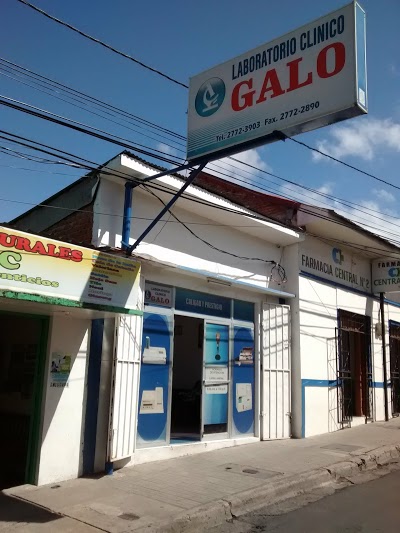
That’s how it happened that he first had a microscope in front of him. When he saw blood cells under the microscope, a new world opened for him. “I was completely in love,” he states. Question about how this world of the cell functioned kept swirling through his head. That love affair never ended, rather it brought him to where he is today.
When he graduated in 2003, and the moment arrived to go to the university, anxiety took hold. There was no money for that in his family. He applied for a scholarship to the Nicaraguan National Autonomous University in Leon. They advised him to study medicine, since he’d never lack for work. However, the most common work of the medical field in Nicaragua didn’t really appeal to him. He wanted something more than just hospital rounds, office consultation and writing prescriptions.
He chose the field of Clinical Bioanalysis. He reasoned that he would always have the option of returning to Matagalpa and working in the Galo Laboratory. Or, maybe he could do something else. That decision changed his life.
He entered the university dorms in 2004 as part of a special “preparatory” program. He describes this time as some of the best years of his life. Unlike his student experiences when he was younger, here he did fit in. “During my whole life, up until that moment, I had felt out of place. In Matagalpa, I was a kid who didn’t have money surrounded by kids who did. Then I find myself with this bunch of kids who were all in the same situation. We were poor, but if we managed to pass the year, we’d be guaranteed a slot in the university. We’d get the chance to get ahead. For the first time, I didn’t feel alone,” he admits.
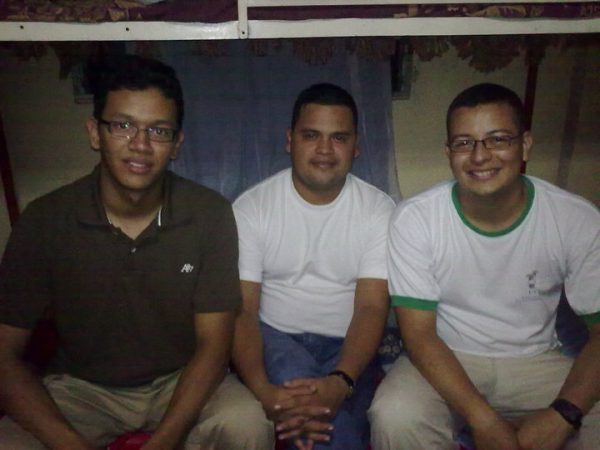
“Genomics hit me in the face”
Some of his professors told him that he “asked too many questions”. Others encouraged him to continue questioning, and to go into the world of research. He mentions some of those he’s grateful to: Drs. Margarita Paniagya, Samuel Vilchez, Orlando Mayorga, Erick Amaya and Daniel Reyes.
Carlos Talavera was now certain that he wanted to work in research. However, he still hadn’t settled on a specific field. “Genomics literally hit me in the face. A woman in the university was cleaning out old magazines. She threw one into the corridor where I was sitting and it hit me in the face. The magazine was about the first sequencing of the human genome, and I began to read about genomic research. With these ideas, I wrote a research proposal,” he details.
He didn’t have a computer to carry out his research, but fortunately a friend sold him an old one in several quotas. It took ages to boot up Windows. At the time, he didn’t know that soon afterwards computers would become one of his principal tools. His friends offered to install Linux, a more rapid operating system. Linux is used in the field of academic research and requires programming knowledge that Carlos then began to acquire.
Fast forward to 2008, when one day he met Dr. Ernesto Medina in the university halls. Dr. Medina had recently concluded his term as rector of the UNAN-Leon. Without having been introduced, Talavera approached him and asked him to read his research proposal. Two weeks later, Medina put him in contact with Dr. Jorge Huete.
Huete is the founder and director of the Molecular Biology Center at the Central American University in the capital. He proposed that Carlos join a research project regarding the genetic biodiversity of the pathogen that causes Chagas disease. Talavera began traveling between Leon and Managua to keep up with his classes and work on the project.
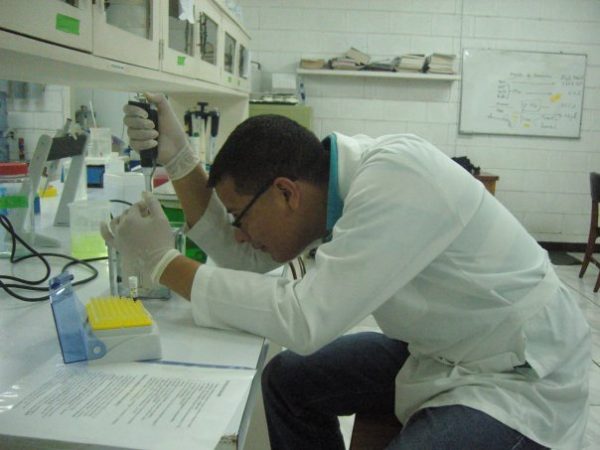
In 2010, Dr. Huete mentioned that they needed help from centers with more experience in genomics to further the initiative. He proposed to Talavera that he seek options outside the country. Carlos e-mailed a number of centers and received an offer from the Karolinska Institute of Molecular and Cellular Biology. He worked for this Institute in Stockholm, Sweden for a month.
Fortunately, he had studied English as a teenager. At twelve, he had become interested in learning it on his own. Later, Maria Eugenia Galo of the laboratory paid for a course which he completed in four months. It gave him “at least the level I needed to hack through it,” he explains.
“I went [to Sweden] with the idea that I had to get there and show them that I’m the best at what I do. And if I demonstrated that, they would give me the opportunity to enroll in a doctorate program.” And that’s what happened.
The rocket takes off
Carlos Talavera-Lopez returned to Nicaragua to finish his final thesis as quickly as he could. He applied to a program in Sweden, received a scholarship, and returned there to do his doctorate.
In Sweden, he took on the task of sequencing the genome of the Norwegian fir or picea abis. This is Sweden’s traditional Christmas tree, and no one had done this before. The scientific community was interested in the study as a way of preserving the species. They also saw it as a way to possibly improve its use for fuel, or to optimize its use in paper manufacturing. “I learned computational methods and participated in a comparative analysis with other conifer species,” Dr. Talavera adds. That’s how his first article was published in the journal “Nature”.
Once that project was concluded, he once again took up the study of the parasite that causes Chagas disease. “The part that interested me was how the immune system recognizes the parasite, or any pathogen. An interaction takes place between the human immune cells and the Chagas parasite. The latter, seeking to avoid being recognized by the human’s immune system, is able to change its genetic structure. I wanted to understand how that occurred.” He began to study the genetic behavior of both the human immune cells and those of the parasite. That’s how he concluded his doctorate in 2016.
Subsequently, Dr. Talavera moved to London in the UK to study the parasite that causes malaria. This parasite also changes, so that the immune system fails to recognize it. He decided that he wanted to study what was happening to the individual immune cells.
The study of the heart and its implications
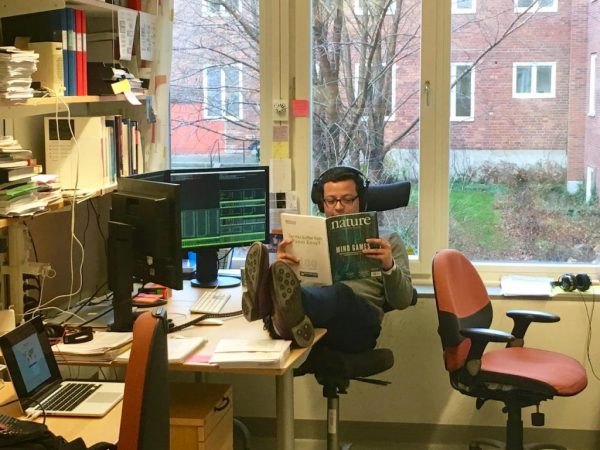
Talavera continued his research in Europe. He worked at The Francis Crick Institute at Imperial College, London. He also worked at the Wellcome Sanger Institute/ EMBL-EBI, the largest genomic institute in Europe. He applied to work at the latter, which at that moment needed help on a project to map the heart.
“We know that the heart is a muscle with a certain type of tissues, but its cellular composition was unknown. I proposed applying certain methods of artificial intelligence to study the data and see what patterns we could detect.”
The scientist takes a moment to clarify that artificial intelligence doesn’t mean robots. “Artificial intelligence is a system of techniques that we utilize to learn from the data. You have an enormous quantity of data that you need to analyze and filter for findings. Before, using the standard methods, we couldn’t pick out these findings. What I did was to program an algorithm, based on the genes that are expressed in each of the cells. That way, every time you find a difference in those genes, you can compare it with the rest. You then say: ‘this cell is behaving differently’, and [that way] you classify it.”
That’s how the team discovered that the heart is composed of 62 different types of cells. Moreover, every region of the heart has different cells. Each region has a genetic circuitry that controls how the cells there communicate to keep it functioning.
Unlike the hearts of some other species, the human heart can’t regenerate. Dr. Talavera wants to discover why. Next year, he’ll have his own team to study the interaction between the cells in a normal state and how that interaction changes when there’s a wound or an attack.
Cardiovascular diseases are the main cause of death all over the world. The characterization of the heart that Talavera and the team achieved will now form part of the Human Cell Atlas. This project seeks to map all the cells of the human body. It’s the starting point for discovering new therapies in cardiovascular medicine.
“We need more time, more research, but, in the future, we hope that we can identify what makes each cell of the heart unique. Also, how we could modify it, so that in case of a heart attack, for example, it could repair itself.”
Dr. Talavera has now lived outside of Nicaragua for nine years. He recalls the first time he left the country and saw the resources available in other places for scientific work. “Once you leave the country and see that, it’s impossible to be the same again,” he says laughing.
He took the opportunity to encourage the young people of Nicaragua to explore the world of data and artificial intelligence. “I believe that Nicaragua has the potential. We can apply artificial intelligence methods to mining data in the fields of finances, health, population. We can then implement this knowledge to develop policies for the country.” Dr. Talavera is confident that the human talent exists in Nicaragua, and that the country only needs the tools and the thrust.
The COVID-19 pandemic has forced him to spend long stretches of time in lockdown, together with his girlfriend. He’s spent the time reading, playing videogames and watching movies. Still optimistic, he speaks of the scientific community’s capacity to expand knowledge. “From the first indications of a COVID-19 outbreak up to the present, there’ve been over 8,000 scientific articles published. That gives you the scale of the scientific work on a world level that’s taking place to treat the disease, find a vaccine.”
Looking back on the road he’s traveled, Dr. Carlos Talavera-Lopez says that he feels gratitude and humility. “A lot of gratitude towards the people who have supported me, and especially towards my mother. She taught me to fight to reach where I am.”
The last time he visited Nicaragua was in 2017. This professional Nicaraguan emigrant states that what he misses from his country are La Tonita and his siblings. He also misses Nicaraguan food. “I’d give anything for some rosquillas from Somoto and a cup of coffee from Matagalpa,” he concludes with nostalgia.





